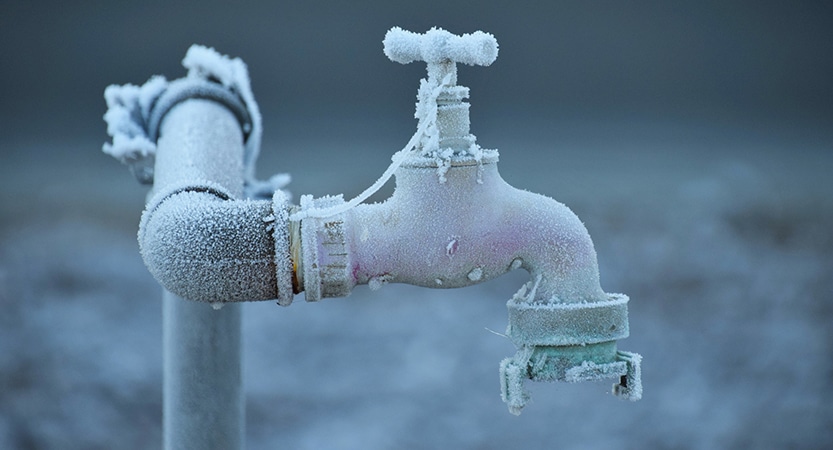Protecting Pipes from Freezing Issues: Key Tips
Protecting Pipes from Freezing Issues: Key Tips
Blog Article
They are making a few great observations related to How To Avoid Freezing Pipes as a whole in the content on the next paragraphs.

Cold weather can wreak havoc on your pipes, particularly by freezing pipes. Below's just how to prevent it from occurring and what to do if it does.
Intro
As temperature levels decline, the risk of icy pipelines rises, possibly resulting in pricey repair work and water damage. Comprehending just how to avoid frozen pipelines is crucial for house owners in cool climates.
Avoidance Tips
Protecting susceptible pipes
Wrap pipes in insulation sleeves or use heat tape to protect them from freezing temperature levels. Concentrate on pipes in unheated or exterior locations of the home.
Home heating methods
Maintain indoor areas effectively heated, particularly locations with pipes. Open up cabinet doors to enable cozy air to flow around pipes under sinks.
How to determine frozen pipelines
Try to find lowered water circulation from taps, uncommon smells or noises from pipes, and visible frost on revealed pipelines.
Long-Term Solutions
Architectural changes
Take into consideration rerouting pipelines far from exterior wall surfaces or unheated areas. Add extra insulation to attics, basements, and crawl spaces.
Upgrading insulation
Buy premium insulation for pipes, attics, and walls. Proper insulation aids keep consistent temperature levels and minimizes the risk of icy pipes.
Protecting Exterior Plumbing
Yard pipes and outside taps
Disconnect and drain yard tubes prior to winter months. Install frost-proof faucets or cover outside taps with shielded caps.
Comprehending Icy Pipelines
What causes pipelines to freeze?
Pipelines ice up when subjected to temperatures below 32 ° F (0 ° C) for prolonged durations. As water inside the pipelines freezes, it broadens, putting pressure on the pipe walls and potentially causing them to break.
Threats and problems
Icy pipelines can bring about water interruptions, home damages, and expensive fixings. Ruptured pipes can flood homes and create considerable architectural damage.
Signs of Frozen Piping
Recognizing frozen pipes early can avoid them from breaking.
What to Do If Your Pipes Freeze
Immediate actions to take
If you presume frozen pipelines, maintain faucets open to eliminate stress as the ice melts. Use a hairdryer or towels taken in hot water to thaw pipelines slowly.
Conclusion
Protecting against icy pipelines requires proactive procedures and quick actions. By understanding the reasons, indications, and safety nets, house owners can secure their pipes throughout cold weather.
6 Proven Ways to Prevent Frozen Pipes and Protect Your Home
Disconnect and Drain Garden Hoses
Before winter arrives, start by disconnecting your garden hoses and draining any remaining water. Close the shut-off valves that supply outdoor hose bibs and leave the outdoor faucet open to allow any residual water to drain. For extra protection, consider using faucet covers throughout the colder months. It’s also important to drain water from any sprinkler supply lines following the manufacturer’s directions.
Insulate Exposed Pipes
Insulating your pipes is an effective way to prevent freezing. Pipe insulation is readily available at home improvement stores and is relatively inexpensive. Pay close attention to pipes in unheated areas such as the attic, basement, crawl spaces, or garage. Apply foam insulation generously to create a buffer against the cold. You can also wrap your pipes in heat tape or thermostat-controlled heat cables for added warmth.
Seal Air Leaks
Inspect your home for any cracks or openings that could let in cold air. Seal any holes around the piping in interior or exterior walls, as well as the sill plates where your home rests on its foundation. Additionally, make sure to keep your garage door closed unless you’re entering or exiting. Leaving it open creates a significant air leak that can lead to frozen pipes.
Allow Warm Air Circulation
During cold snaps, it’s essential to allow warm air to circulate evenly throughout your home. Leave interior doors ajar to promote better airflow. Open kitchen and bathroom cabinets to help distribute heat consistently around the rooms. If you have small children or pets, be sure to remove any household chemicals or potentially harmful cleaners from open cabinets for safety.
Let Faucets Drip
A small trickle of water can make a big difference in preventing ice formation inside your pipes. When temperatures drop significantly, start a drip of water from all faucets served by exposed pipes. This continuous flow helps prevent the water from freezing. Additionally, running a few faucets slightly can relieve pressure inside the pipes, reducing the chances of a rupture if the water inside does freeze.
https://choateshvac.com/6-proven-ways-to-prevent-frozen-pipes-and-protect-your-home/

As a keen person who reads about Prevent Frozen Pipes , I imagined sharing that excerpt was essential. Do you know about somebody who is occupied with the topic? Take a moment to share it. We love reading our article about How to prepare your home plumbing for winter weather.
Schedule A Service Call Report this page